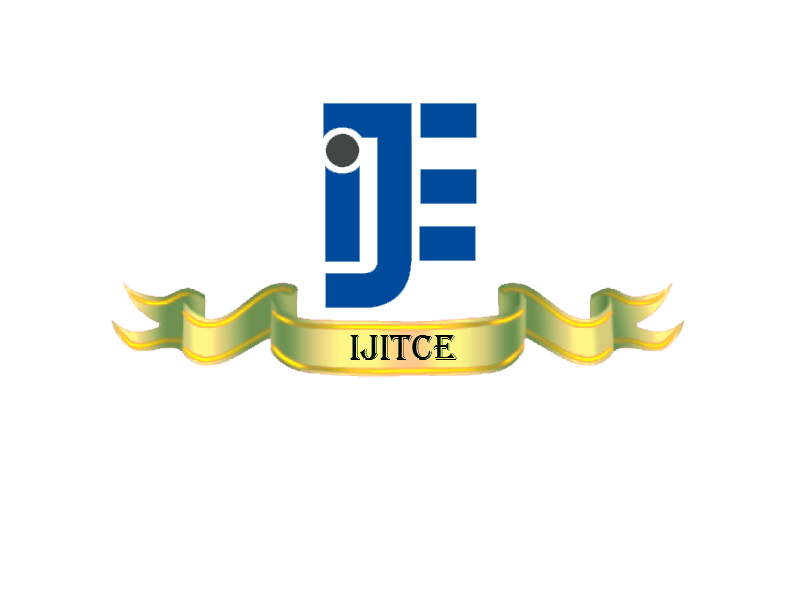August 2016 Issue Vol.6 No.8
A Novel Technique for Prediction of Diabetic Patients Data Using Naives Bayes Classification in Orange Tool
https://archive.org/download//vol6no0801/vol6no0801.pdf
S.Nivetha
Assistant Professor, Department of Computer Science, Kamban Arts and Science College,Pollachi,Tamil Nadu, India
Dr.A.Geetha
Assistant Professor, PG & Research Department of Computer Science, Chikkanna Govt. Arts College, Tirupur, Tamil Nadu, India
Abstract:
Data mining is a process of extracting information from a dataset and transform it into understandable structure to discover patterns in large data sets. Data mining for healthcare is useful in evaluating the effectiveness of clinical treatments to its roots in databases records system getting to know and facts visualization. Diabetic ailment refers back to the heart disorder that develops in persons with diabetes. The term diabetes is a continual ailment that occurs both when the pancreas does now not produce sufficient insulin. The blood vessels despite the fact that many data mining type techniques exist for the prediction of heart disorder there is inadequate records for the prediction of heart illnesses in a diabetic character. A number of experiments had been conducted the use of orange tools for contrast of the performance of predictive facts mining techniques on the diabetic dataset with attributes. The naive bayes classifier method has been carried out in orange tool prediction model using minimal training set to diagnose vulnerability of diabetic sufferers. All the above experiments find the probabilities of risk in diabetic patients for coronary heart sickness. In this test a comparative examine has been performed at the classifiers which result in the chance of diabetic patients getting heart disease from a system. The performances additionally had been in comparison the use of accuracy and additionally in terms of precision and exhibited a great overall performance.
Keywords:Data Mining, Diabetic Data, RF, NB, ORANGE.
Improved Index Based Over Distributed Hash Table for Peer To Peer Systems
https://archive.org/download//vol6no0802/vol6no0802.pdf
D.Kavitha
Assistant Professor, Department of Computer Applications, Nandha Arts and Science College,Erode, Tamil Nadu, India
Abstract:
In this fastest growing trend in the Peer-to-Peer (P2P) systems, most of the current internet applications scalability becomes key issue in the performance of query exchange between peer nodes. Hashing forms the basic elements of peer networks with more literary works presented in Distributed Hash Table (DHT). The scalability of peer networks demands more complex queries to be handled. The complexity of the queries arise in terms of range, nearest neighbor, sequential and hierarchical patterns. Here consider DHT for peer networks, where uniformity of hashing is accomplished for data localization, it is unable to handle complex queries. In addition to query inefficiency, the DHT also have the history of poor maintenance. This proposed work presented an improved index version for LIGHT, which adapts a B+ tree indexing. B+ tree index deleted unwanted and unused leaf nodes to make the hash structure more effective for query exchange between peer nodes. A pseudo column is introduced by B+ tree model to increase the throughput of the peer node query exchanges. Experimentation is carried out to testify the performance of LIGHT and Improved LIGHT with B+ tree indexing in terms of data exchange overheads, throughput of query exchange, memory requirements and time to prune the query. The results indicated that proposed improved LIGHT scheme had nearly 75% improvement of throughput and 40% of overhead is minimized when compared to that of existing LIGHT. The memory requirement and pruning time are significantly reduced for the proposed improved LIGHT scheme compared to the existing.
Keywords:DHT, P2P, PHT, RST
Read complete August 2016
D.Kavitha
Assistant Professor, Department of Computer Applications, Nandha Arts and Science College,Erode, Tamil Nadu, India
Abstract: In this fastest growing trend in the Peer-to-Peer (P2P) systems, most of the current internet applications scalability becomes key issue in the performance of query exchange between peer nodes. Hashing forms the basic elements of peer networks with more literary works presented in Distributed Hash Table (DHT). The scalability of peer networks demands more complex queries to be handled. The complexity of the queries arise in terms of range, nearest neighbor, sequential and hierarchical patterns. Here consider DHT for peer networks, where uniformity of hashing is accomplished for data localization, it is unable to handle complex queries. In addition to query inefficiency, the DHT also have the history of poor maintenance. This proposed work presented an improved index version for LIGHT, which adapts a B+ tree indexing. B+ tree index deleted unwanted and unused leaf nodes to make the hash structure more effective for query exchange between peer nodes. A pseudo column is introduced by B+ tree model to increase the throughput of the peer node query exchanges. Experimentation is carried out to testify the performance of LIGHT and Improved LIGHT with B+ tree indexing in terms of data exchange overheads, throughput of query exchange, memory requirements and time to prune the query. The results indicated that proposed improved LIGHT scheme had nearly 75% improvement of throughput and 40% of overhead is minimized when compared to that of existing LIGHT. The memory requirement and pruning time are significantly reduced for the proposed improved LIGHT scheme compared to the existing.
Keywords:DHT, P2P, PHT, RST
